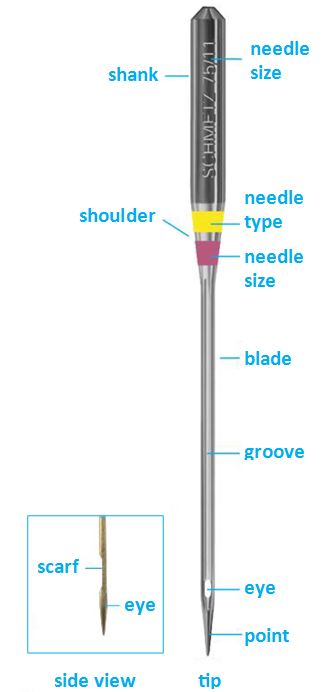What thread weight with which needle size?

A quick rule of thumb: the lower the weight of the sewing thread, the thicker the thread; the higher the thread weight, the thinner the thread.
Needle sizes used for patchwork vary from size 60/8 to size 100/16.
In sewing needle sizes, a larger number represents a larger needle shaft and usually a larger eye, while a smaller number represents a smaller needle shaft and eye. Needle size 60/8, if necessary, should be noted that it is too small for the needle threading mechanisms of some sewing machines.
When combining a sewing needle and sewing thread, you can follow this basic rule:
- 60/8 – 100wt discreet silk and polyester thread
- 70/10 – 100wt sewing threads
- 80/12 – 50wt sewing threads
- 90/14 – 40wt sewing threads
- 100/16 – 30wt sewing threads and thicker
For patchwork and thread painting, Schmetz Microtex Sharp or Superior Threads Titanium Topstitch sewing needles are good choices. Superior Titanium Topstitch needles last 5-8 times longer than standard models.
For patchwork, use a heavier thread when you want the sewing mark to stand out more clearly, and a lighter thread when you don't want it to be more inconspicuous. Remember that when you use a 90/14 sewing needle for quilting, it may leave larger holes in the fabric than you might like. It is good to try out the intended combination of needle and thread before actually starting.
If the sewing machine tangles the thread, makes a broken or incomplete stitch mark, check that you have the right size sewing needle for the thread you are using. Also remember to change the sewing needle regularly.
It is also a good idea to use different sewing needles for joining the patches and topstitching.

The silver-colored needle above is suitable for sewing patches together, and the lower gold-colored one for topstitching.


